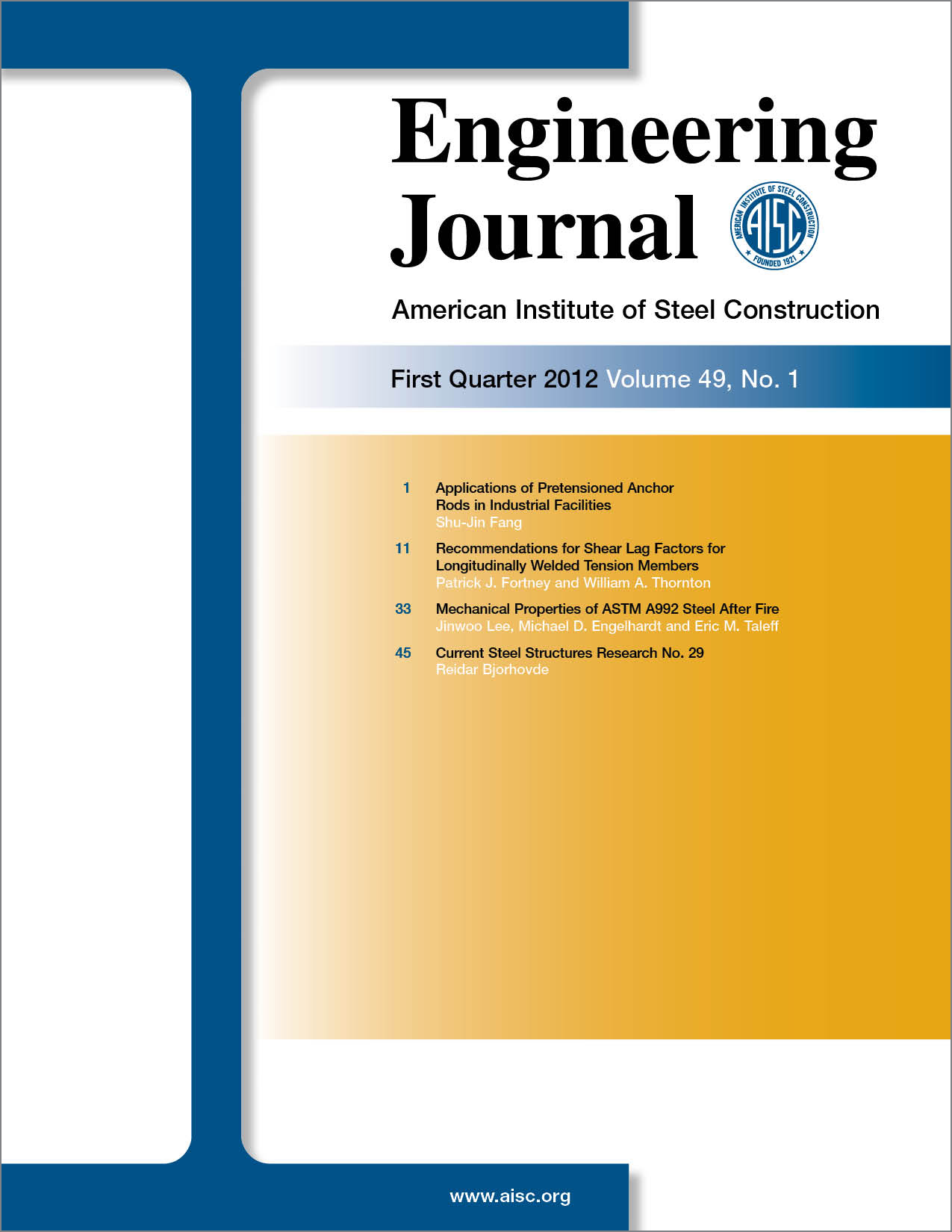Recommendations for Shear Lag Factors for Longitudinally Welded Tension Members
DOI:
https://doi.org/10.62913/engj.v49i1.1223Keywords:
shear lag, longitudinal weldsAbstract
Section J2.2b of the 2010 AISC Specification for Structural Steel Buildings requires the length of longitudinal welds, used to connect flat plate tension members, to be greater in length than the distance between the longitudinal welds. Currently, weld lengths less than the distance between the welds are not permitted for connections of flat plate members.The procedure for the calculation of the shear lag factor, U, for this type of connection is given by Case 4 in Table D3.1 of the AISC Specification, where U is a function of the length of the longitudinal weld and the width of the plate. Although Case 4 is explicitly defined for plates only, the generally accepted practice in the design of similar welded connections of angles, channels, tees and wide flange members is to apply the same limitation on weld length, and calculate the effect of shear lag as given by Case 2 in Table D3.1 of the AISC Specification, while ignoring shear lag effects with weld lengths between one and two times the distance between the welds. Furthermore, for connection geometries meeting those for Case 2 or Case 4, there is no guideline for considering connection strengths where the longitudinal welds on each side of the member have unequal lengths (e.g., skewed web members or braces), or weld lengths less than the distance between the welds.This paper presents recommendations for a generalized design procedure for welded connections of plate, angle, channel, and tee tension members regardless of the length of the weld or if the length of the longitudinal welds are unequal. A summary of the treatment of various current building codes/specifications (AISC and CSA) on this topic is presented along with the results of several published experimental research projects that evaluated the behavior of these types of connections. Two analytical models are presented, and recommendations for changes to the current AISC Specification are made, followed by an example problem illustrating the practical application of the recommendations.

